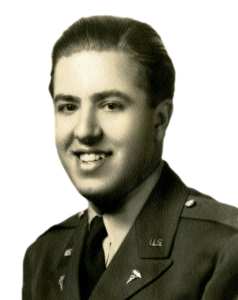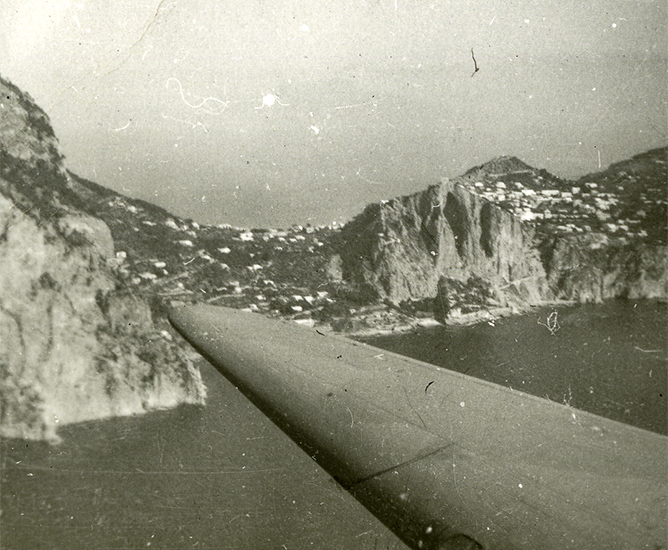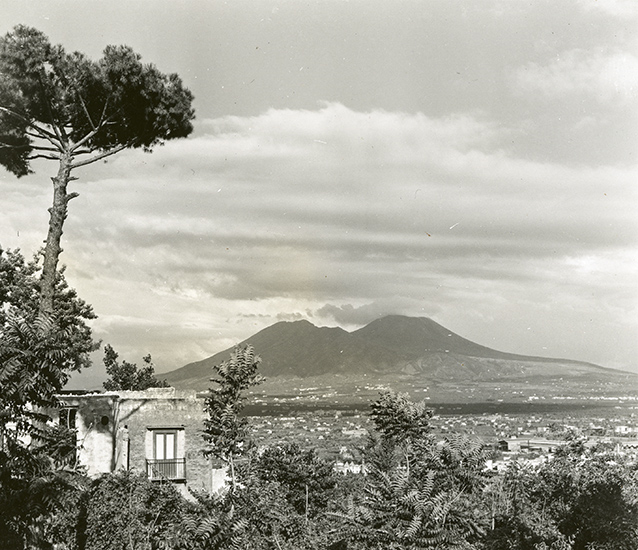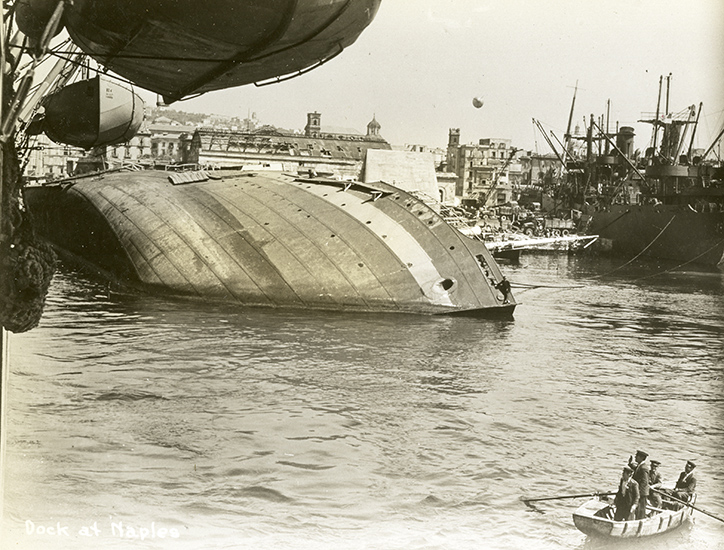You are here: Home / Naples, Italy – May 28, 1944 – June 5, 1944
Naples, Italy
May 28, 1944 – June 5, 1944
Shortly after noon on May 28th, we steamed out of Palermo harbor on a Liberty ship as part of a small convoy accompanied by special sub-chasers, a comfort to all aboard. We weren’t sure of our destination, but felt that it would be Naples. We couldn’t have asked for a more calm or uneventful voyage and at about 9 o’clock on May 29th passed between the Isle of Capri and the Italian mainland and entered the harbor of Naples.
I had no regrets about leaving Palermo. We had been comfortable, to be sure, but quite out of the war for many months. It was a decided relief to get out on the water away from the filth and squalor so characteristic of Sicily. Even though the valley and mountains looked beautiful from the ship, the unpleasantness of the city itself stood foremost in my mind as Sicily.
Capri was a disappointment, as we passed it about a mile or two off shore. It arose abruptly out of the sea, quite mountainous on its southern shore. On the north there was an inlet with the more populated section of the isle sloping down to the shore. From this casual observation it held none of the romance with which it has always been associated.
As we came closer to Naples, Vesuvius became more distinct through the haze which overhung the harbor. A faint cloud of smoke was slowly rising from the crater, quite in contrast to the eruption several weeks ago. I began to feel at this point that I had had enough of world traveling. When this war is over and I am back with Georgia and Laurie, I shall be content to stay in California for the rest of my days.
As Naples itself came more clearly into view, I was impressed by its size, being much larger than I anticipated. The harbor was quite crowded, with many ships lying out in the bay waiting to unload. Several ships lay partially sunk or turned on their side at the wharves, and many of the latter (those on their side) were being used to unload cargo upon. We tied up along-side of one, a former Italian hospital ship that had been scuttled by the retreating Germans.
The buildings adjacent to the waterfront had the familiar hollow appearance of bombed buildings, but in contrast to Palermo, were not leveled to the ground in many areas. It’s strange, but this has become an almost normal sight by now, and we look upon destruction with a peculiar casualness. The city rose gradually from the waterfront on a rather low hill, church steeples being a prominent feature of the skyline. On the whole, the buildings were much larger than those in Sicily, although not very high. We were whisked through town in a truck convoy so that my observation was quite brief. I gathered a quick impression that, as a whole, the streets were wider and cleaner than those in Palermo, and a greater percentage of them were paved. The civilians also looked cleaner and better clothed. There was less outward evidence of destruction in the portions of the city away from the harbor. I am certain that my impressions would be altered by a more extensive survey.
Activity was at a great height with trucks zooming to and from the waterfront and through the city. The streets were crowded with civilians and soldiers. It was particularly interesting to see the various types of uniforms – American, British, South Africans with their red distinguishing shoulder insignia, Australians with their broad-brimmed hats turned up on one side, Ghoumies in their striped robes and turbans, French Africans with their red fez, Frenchmen, Italians – all these made up the Allied forces fighting in Italy.
.





